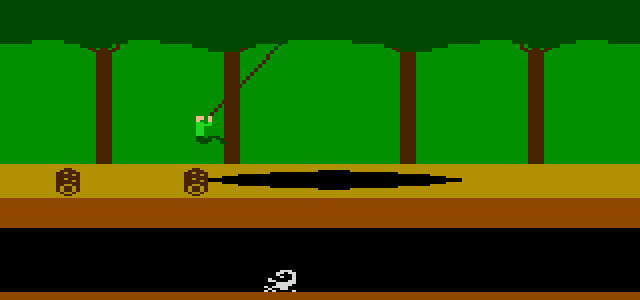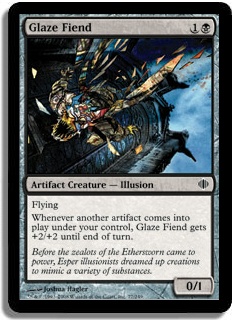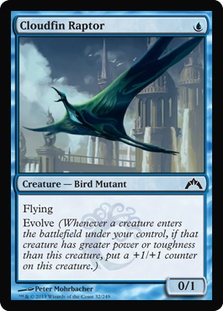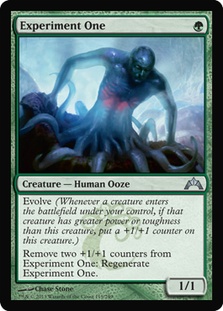Pro Tour Dragon’s Maze has come and gone, and while I had a fantastic time in San Diego, I did not do nearly as well as I would have liked. The biggest culprit for this, and for many other Pro Tours where I have fallen short of the mark, has been poor deck selection. While I went 4-2 in my two drafts (which with some tighter play and a little bit of luck could have easily been a 5-1 or 6-0—I will be discussing these drafts in my next article), my Constructed record left something to be desired, and I was out of contention about halfway through day 2.
Building a deck in a basically unknown Block format is very difficult, and it’s extremely easy to fall into a number of pitfalls and waste valuable time.

Today I’m going to show you my process and explain those pitfalls to you. While Return to Ravnica Block Constructed is not an extremely relevant format (don’t ignore it though—it will shape the new Standard format post-rotation), these are universal concepts that can be applied whenever you are building a deck for a new format.
Pitfall # 1: Building Your Deck In A Vacuum
My testing process started somewhat unsurprisingly with a counterspell heavy U/W/R Sphinx’s Revelation deck. Who would have thought?
However, I quickly discovered how awkward the mana was. Between having to play a fairly large number of Guildgates and having the maximum twelve dual lands, you were very often placed in a situation where you wanted to leave mana open for Syncopate, Counterflux, or Azorius Charm/removal and had to play two life for an untapped dual. Aside from telegraphing your play, it also added up to a lot of unnecessary damage when your opponent would just not play a spell or not play the spell you wanted them to play.
I decided I wanted to try playing a lot more basics and moved to a two-color deck with a slight splash:
Creatures (2)
Planeswalkers (2)
Lands (16)
Spells (40)

In some formats, this deck might be sweet. It has a great counterspell base, some fantastic instant speed card draw, a way to play some more situational answers but still have a use for them (Thoughtflare), quality removal, a powerful planeswalker, and two of the best blue finishers in years in Aetherling and Sphinx’s Revelation.
So what was the problem?
As we saw in So You Think You Can Brew, it’s all about context.
After playing some games with the deck, it became very clear that it was NOT very good in Return to Ravnica Block Constructed.
Why?
Firstly, the threats in the format are extremely powerful and resilient. Trying to answer them all one for one, establish complete control with Sphinx’s Revelation, and win the extreme long game was simply a losing proposition. Something was going to slip through the cracks, and very often it was going to be an Obzedat, Ghost Council; Advent of the Wurm token; or Jace, Architect of Thought that would take over the game.
Once Sin Collector and Voice of Resurgence were spoiled, things went from bad to real real bad.
Extremely powerful threats have been a staple of Magic design for quite a while now, and it’s one that players who have been playing for a very long time (such as myself) sometimes still have trouble adapting to. Creatures, and threats in general, are much better than they used to be, and being completely reactive is an extremely difficult plan.
While the deck was ultimately a failure, there were a number of things I took away from the experience. When brewing for a new format, you are going to fail much more often than you are going to succeed, so it’s extremely important to recognize the lessons learned from the process:
- The mostly two-color/basic land mana base was very smooth. You can see this in the U/W deck designed by Gerard Fabiano that Uri Peleg took to a Top 25 finish.
- There were some nice interactions between Izzet Staticaster, Turn // Burn, and Ral Zarek, which is something to keep in mind when building decks in the future.
- Having a proactive plan is extremely important in this Block format because you need to be able to close the game out.
Pitfall #2: Building A Deck Without Considering What Your Opponent Is Going To Be Doing
I played a strange game with the previous deck where my opponent was playing a very aggressive deck and taking a lot of damage from his lands; it seemed like the only way I was going to win was to dome him with my Warleader’s Helixes and other burn spells to try to race him. It didn’t work, but this idea combined with the other things I’d learned led me to my next deck idea:
Creatures (21)
- 2 Skyknight Legionnaire
- 4 Hypersonic Dragon
- 4 Lyev Skyknight
- 4 Ash Zealot
- 3 Aurelia, the Warleader
- 4 Boros Reckoner
Lands (17)
Spells (22)
- 3 Plains
- 5 Mountain
- 2 Mizzium Mortars
- 2 Annihilating Fire
- 2 Boros Charm
- 2 Mugging
- 2 Turn
- 4 Warleader's Helix
Sideboard

There is a lot of very efficient burn in this format, and this deck has an insane amount of reach. Your flying creatures are essentially unblockable because the format is full of huge ground pounders, and almost every creature in the deck acts like a burn spell. It only takes five or six spells to end the game. Warleader’s Helix is almost always aimed at the face, and Hypersonic Dragon into Aurelia, the Warleader is extremely close to a turn 2 clock all by themselves (dealing eighteen damage in a format with shocklands is usually good enough).
This was the first draft of the deck, and I quickly found Turn // Burn, Izzet Charm, and Skyknight Legionnaire to be underpowered. Ash Zealot was only really good against decks with no blockers and made the mana difficult. However, the core of the deck seemed very powerful, so I kept trying different cards.
The final version I arrived at was:
Creatures (18)
Planeswalkers (3)
Lands (17)
Spells (22)
Sideboard

I still found that the deck was missing something, and I never really figured out what that something was. Sometimes you’d just draw a few Boros Charms, a Ral Zarek, and an Aurelia and get rolled while you hardly interacted, and sometimes you’d utterly destroy them with only like five spells. The deck was lacking an early drop and an early removal spell that could also go to the face.
My deck was insane against a goldfish,* but it often sputtered out when faced with real opposition.
This is a problem I have all the time when building decks. I think very linearly, which is why I think playing linear decks comes very naturally to me, but this doesn’t always work well in the real world. While testing for Pro Tour Honolulu 2009, I built a sweet Esper Aggro deck that had a very fast and powerful goldfish and included cards like Glaze Fiend and Etherium Sculptor. However, once I started playing it online, it was very clear that the avalanche of removal spells I’d be facing made the deck almost completely unplayable.
Back to Return to Ravnica, I found in my last few days of Magic Online testing before the Pro Tour that my win percentage was steadily sinking, and I was having a lot of trouble with Sin Collector and Blood Baron of Vizkopa. Unfortunately, this is a good example of me falling into my last two pitfalls…
Pitfall #3: Wasting Too Much Time On A Pet Deck
Pitfall # 3 is actually rather ironic. Early in the testing process, I was working with GP champ Frank Skarren and GP finalist Alec Nezin, and Frank had constructed a rather ugly BUG aggressive deck based on +1/+1 counters. When I say it was ugly, I mean it had three one-drops:
While also trying to cast Shambleshark and Renegade Krasis with a mana base that included four basic Swamps. When I expressed my concerns about the deck to Frank, I could already see it in his eyes— Frank was completely and inexorably married to the deck despite any and all obvious faults. Now, this is not a knock against Frank at all, but rather part of the testing process. I explained to him how important time was and how it’s really important to try a bunch of different decks and see what sticks.
So, of course, instead I spent over a week on my R/W/U deck and only decided it wasn’t good enough the day before the Pro Tour.
Aye, sometimes I should just listen to myself.
However, the last pitfall serves as the biggest one of all, which also was a major factor in me not realizing that my deck was not good enough until it was too late…
Pitfall #4: Not Getting Enough Games In Against GOOD Decks
Early on I really was crushing everything on Magic Online with R/W/U, but as the hour grew later and later I started losing more and more. The decks I was playing against were better; there was Sin Collectors, Blood Barons, Voice of Resurgences, and all sorts of other cards from well-built, efficient decks that were giving me a lot of problems.
This led to a last minute panic, as it was now a few days until I had to get on my flight and my deck was no longer winning.
The biggest reason for this, however, was simply poor testing.
I really needed to get myself on to a decent team and preferably get myself to San Diego a few days to a week early so I could really get the think tank going and get some stuff done. Now, I did have a team for this event, but despite being an awesome group of guys, it was very loosely organized and separated by thousands of miles and a reasonably significant language barrier. Frank and Alec were the only players (somewhat) local to me, and our Facebook group was the only real interaction we had.
This is a problem. I’ve played pretty much every Constructed Pro Tour under these conditions, and it is something I am making sure that I change for the future. Most Pro Tours I’ve been basically on my own, playing my own decks that aren’t just there yet, and it has been a significant handicap. And with the Pro Tour schedule now being so closely tied with a new set’s release, having a group to figure it out in the two or three weeks you actually get is critically important.
Networking really is everything.
Even if you aren’t testing for the next Pro Tour but for a PTQ, SCG Open, or even your local Friday Night Magic, try to get together with as many similarly skilled players (or better) as you can. Working with a good variety of other players can introduce you to many things you had not yet thought of or had thought of but dismissed. This is one of the most important aspects of improving as a player—and the most fun too! You get to hang out with your friends playing a game and trying to improve yourself. While Magic Online can be a great tool for improving as a player, the social environment is an extremely fruitful one.
Wrapping Up
Despite my poor performance, I had a really amazing time at Pro Tour Dragon’s Maze. San Diego is a beautiful city, and between the city, good people, John Fiorillo birthday party, karaoke, and so on, I was reminded of how much fun Pro Tours can be. My only regret is I missed the basketball game on Sunday— next PT!
While we didn’t really break the format or put up awesome numbers, I wanted to give a shout out to my team, which consisted of:
Frank Skarren
Alec Nezin
Gerard Fabiano
Mike Sigrist
Uri Peleg
And all the Italians (especially Mattew Versari and Andrea Mengucci)
Next article I will be discussing the Limited portion of the Pro Tour, where two good drafts left me with both a decent record and a solid understanding of the format as a whole.
Also, Gary Fingers was the winner of first episode of So You Think You Can Brew—look for him to defend his title in an upcoming episode sometime soon!
Until then, thanks for reading!
https://www.facebook.com/jimdownside
(I highly encourage all comments and feedback. Feel free to either post in the comments of the article or message me directly on Facebook. Please also feel free to follow me on Facebook, but don’t be offended if I don’t accept your friend request; I only add people I’m acquainted with in person.)
*"Playing against a goldfish" (or "goldfishing") is a slang term for playing your deck solo just to see how smooth it runs or what turn it kills by.





